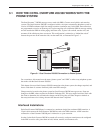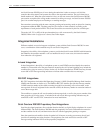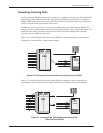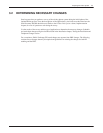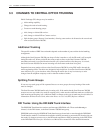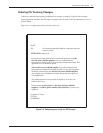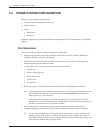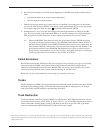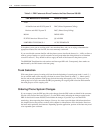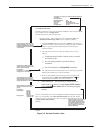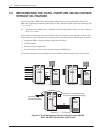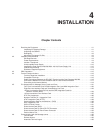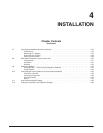
Preparing
the Phone System 3-9
Octel Overture 200/300 Serenade 3.0
PB60014–01
6. Record
the pilot number for each hunt group. Depending on the PBX type, the pilot number may be
either
-
A phantom number with no actual extension appearance
-
The first extension of the hunt group
7.
Make the hunt group number easy to enter and easy to remember
, since employees use this number
to access the Octel Overture 200/300. Some phone systems permit single-digit access to hunt groups.
For example, employees need only press
5
to reach the Octel Overture 200/300.
8.
Determine how to set up a fail-safe answering position based upon features available for the PBX
type. This may be either programmed in the PBX as an overflow situation or by call forwarding the
hunt group pilot or member extensions. If none of these are permitted, refer to item 5 (above).
.
When the DID/E&M T
runk Interface sends calls to the Octel Overture 200/300 hunt group,
this group should not forward when busy
. The DID/E&M T
runk Interface directs the calls to
the Octel Overture 200/300. If the DID/E&M T
runk Interface receives a busy signal from the
Octel Overture 200/300, it redirects the call to the extension configured as the attendant. If the
group should overflow for non-DID/E&M T
runk Interface calls, this may require two hunt
groups with the same members, one of which overflows and another that does not. (Setting up
two hunt groups with the same members is not possible on all PBXs.)
Called
Extensions
Because
the Octel Overture 200/300 provides call coverage for busy extensions, any type of call waiting
*
feature provided by the PBX is not required. Remove this feature from the PBX configuration for
extensions called through the Octel Overture 200/300. PBX call waiting can mislead the second caller
,
who hears that the extension doesn’t answer instead of hearing the true busy status.
Remove any system call forwarding for call coverage (to a message center
, etc.).
Trunks
Possible changes to the PBX trunk programming include redirecting trunks to the Octel Overture 200/300
and assuring any trunking changes do not affect the selection of trunks for outgoing calls. No changes
need to be made to the DID trunking or programming in the PBX.
Trunk Redirection
Trunks
are directed to the Octel Overture 200/300 via a PBX feature. Many PBX manufacturers call this
feature DIL, Direct In Lines, or DIT, Direct In T
runks. T
able 3-1 lists several PBX manufacturers and the
name of that feature for their phone systems. If the phone system does not provide a DIL-type feature,
refer to the Implementing PBXs Without DIL Feature section in this chapter
.
* When a busy extension receives a second call, notification of the second call is given by a tone that indicates a call is waiting. The busy extension may
ignore the tone or place the first call on hold to answer the second. The notification tone is only heard by the called person and the caller hears ringing
instead of a busy tone.



